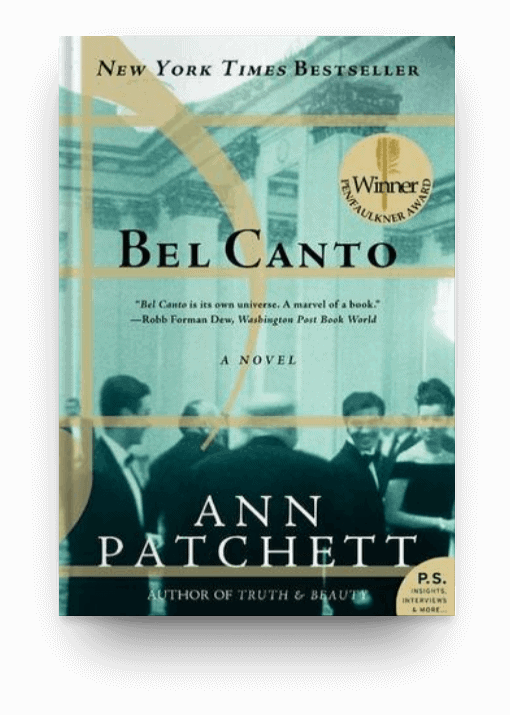Why You Should Reread Your Favorite Books and How to Make It Worth Your While
How to approach rereading your favorite books to make the most of your time, appreciate the book, and remember the details of the story.
This post may include affiliate links. That means if you click and make a purchase, I may earn a small commission. Please see Disclosures for more information.
How often do you reread books?
Never?
If you said never, I wouldn’t be surprised. That’s been my answer as well for many years.
There are just so many books that I want to read. So many books I haven’t read. And I already don’t feel like I have enough time to read all that I want to.
And yet, there are some favorites that I keep on my shelf. Each time I look at them, I feel a little tug. And my mind starts circling:
“That’s my favorite. But how did it even end? Is it really my favorite if I don’t remember what happened in it? I should read it again.”
And then I don’t read it again.
A few weeks ago, I wrote about ten books that I thought would be worth reading again. THESE are the books sitting on my shelf, the ones I keep walking by, the ones that tug me over to them and beg me to pick them up again.
Most of these were books I had loved on the first read, that had stayed with me as favorites, but that I didn’t remember very well.
So, after lots of walking by these books, I finally decided to start the rereading I’ve been meaning to do for ages. I took a book with me on vacation and dove in–for the second time.
Rereading with Purpose
Before embarking on my project to reread some favorite books, I decided I wanted to be purposeful about it. There are several things that I want to accomplish when I reread a book:
Remember the Book
If a book is to remain a favorite, I want to remember it in detail. In a sense, I want my favorite books to be a part of me. I want to be able to discuss them with someone at length, even years from now. (Instead of sort of lamely trailing off, “Yeah, I loved that… but I don’t remember much about it.”)
Recapture the Magic
My hope is that any book I choose to read again will hold up to my initial love. Obviously, this doesn’t always happen–people change, books no longer resonate, situations and characters look different in light of personal experiences.
But instead of racing through a book to find out what happens, I want to spend some time with it and pay attention to the things that make it great. Maybe not the same as reading it for the first time, but maybe better?
Pay Attention to Technique
As a wannabe author, I want to understand how my favorites get it done. I often don’t even notice moments of brilliance and skilled technique when I first read a book–and if I’m immersed, I don’t really want to. I still want to read for enjoyment. But on a reread, I want to understand: what is it the author did to make me love this book so much?
These goals won’t necessarily apply to people who reread books over and over again as “comfort reads”–which I know a lot of people do with books like Harry Potter or Jane Austen. But they are helpful when returning to a book you’ve read only once, or that you haven’t read in many years.
Bel Canto by Ann Patchett
The first book I picked up in my quest to reread more was Bel Canto. I’ve raved about Ann Patchett a few times here on the blog, and Bel Canto is the book that made her a must-read author for me. I included it in several recent lists: 5 Thrilling Books (that Aren’t Mysteries) and 10 Books Worth Reading Again.

The Story
Bel Canto is the story of a hostage-taking gone wrong. In an unnamed South American country, a party in the vice-presidential mansion is invaded by a group of 18 terrorists–most of them teenagers–demanding that the president be handed over.
The president, however, is not in attendance. The group changes course and takes the rest of the attendees hostage–for months.
Party attendees include a world-famous opera singer; a wealthy Japanese businessman; the vice president; and diplomats, businessmen, and government officials from around the world, plus one translator who facilitates communication between them all.
Making the Reread Great
With my rereading goals in mind, I took my time reading Bel Canto again–and it was amazing.
If you are planning a reread of a favorite book sometime soon, here are a few tips:
1. Savor the Language
I am certain that the first time I read this book, I raced through it to find out what happened.
This time, I savored it–and to be honest, I’m not much of a savorer when it comes to reading.
Not every book is worthy of savoring for its language, but if the prose of any book could be called “lyrical,” it’s this one–fittingly, as music and opera are central to the story.
While a story about a hostage-taking sounds like it would be filled with thrills and action, the events here occur gently. The prose flows from one event to the next with no abrupt starts and stops or cliffhangers.
The terrorists seem to enter like water:
“There were now an additional eighteen people at the party. No one there could count them at the time. They moved and spread. They doubled and tripled as they pulsed around the room, appeared from behind curtains, came down from upstairs, disappeared into the kitchen. They were impossible to count because they seemed to be everywhere, because they were so similar, like trying to count bees in a swarm around your head.”
Even with the flowing prose, Patchett manages to maintain the tension as days and months drag on and the lethargic hostages and terrorists build a routine–which is why it was included in the thriller post.
Even if the prose of your favorite couldn’t be considered lyrical, paying closer attention to the language, structure, and turns of phrase chosen by the author will only deepen your appreciation for a book.
2. Take Notes
There are reasons you chose this book, over all the others you could read, to read again. If you’re like me and didn’t remember the story, take some notes on the plot, characters, and themes. By hand, if you can–they’ll help you remember.
Also try to identify the things that made the book stand out for you, and write them down. Was it the prose? The pacing? The characters? What did you love about this book?
One of the things that I love about Bel Canto is how Patchett made me care so much about the characters, despite revealing so little about their lives outside of the house. Taking notes about the characters made me realize just how little I knew about them.
We don’t know anything about whether opera singer Roxane Coss had any relationships or family. We never find out the names of Mr. Hosokawa’s wife or children. We get small glimpses of the terrorists’ backgrounds, but very little detail.
And yet, none of these characters are one-dimensional. One of the terrorist leaders is a teacher. A Japanese businessman is a talented pianist. A teenage terrorist harbors a love for music.
As the cover blurb says, “Bel Canto is its own universe.”
3. Watch for Clues
If you remember a book well enough that you know what’s going to happen, you may pick up on clues that you missed the first time you read the book.
This is especially likely to occur with a mystery and will give you the opportunity to see how an author builds tension and plants clues and red-herrings along the way.
Bel Canto tells us from the outset how the story ends, but the tension remains. The reader can’t help but hope for a future for hostages and terrorists alike, even as Patchett reveals early on that this is not the outcome.
4. Research the Background…and What’s Next
Do your own “story of the story” research. You know the story–even if you don’t think you do–so learn a little more about it.
What inspired the author? What’s happened since the book came out–sequels, movies, backlash? What did the author say in interviews? What have reviewers and regular readers said about it in the years since it first came out? Have there been any film or television adaptations, or are any planned?
Bel Canto was inspired by a 1996 crisis in Peru, in which 14 insurgents invaded a Japanese ambassadorial residence during a party and held a number of dignitaries hostage for months.
I’ve seen some criticism of Patchett for glossing over this event when discussing what inspired her, as well as for the way Peru is portrayed in the book. (Though the country is unnamed, the inspiration is clear and phrases like “godforsaken country” abound.)
While I can understand the sensitivity–people died, and it was an enormous crisis in Peru–I give Patchett an author’s leeway to look at a situation, ask “what if?”, and tell a story. Her book is loosely based on the crisis in Peru, and it was also inspired by opera, language, and human complexity–which is why I believe the country was not named.
Other readers will differ in their views on Patchett’s use of this event as inspiration, but it’s interesting to consider the question now, 17 years after the book was released and 22 years after the events in Peru. How do we feel about stories inspired by other tragic events–9/11 for instance, or school shootings?
And here in the present and looking ahead, Bel Canto is seeing a resurgence in popularity–much like other favorites The Handmaid’s Tale and Outlander. An opera based on the book debuted in 2015, and a movie starring Julianne Moore and Ken Watanabe is set to be released this year. I hope I have a chance to see it.
What’s Your Approach to Rereading Books?
If you reread books, I’d love to hear how you approach it.
- Are you a regular rereader of your favorites?
- Do you have some books you return to over and over again, either as comfort reads or because you’re looking for something new in them?
- Have you ever been disappointed after rereading a favorite?



I’ve only reread 1 of my favorite books and that’s This is Where I Leave You because it makes me laugh every time I read it! I’m almost afraid to reread some of my other favorites for fear the magic will be gone but I’m not saying never…maybe someday for the others:) Fun post idea Allison!
Thanks, Renee! I haven’t read This Is Where I Leave You but it sounds great. It’s rare that I read something really funny. I understand your reluctance–I’m hoping that there won’t be too many that lose their magic, but that’s always a possibility!
I love your idea of being mindful when you reread. I also posted a list of ten books I’d like to reread, but even though I’m serious about the desire, the actual doing it is the sticking point. I think you offer some great suggestions. The end of last year, I reread The Secret History and found it to be a a great experience in that i still loved so much about the book. I think if I’d used some of your suggestions here i’d have found even more to like. Great post!
Thanks, Susie! I love The Secret History–and that would be a great one to reread, because those characters are NOT likable (at least from what I remember!). I’d kind of like to figure out what made me like the book so much when they were all so vile 🙂 I feel like it is going to be harder to reread a long book like that, just because of the time, but I hope to work in at least a few.
I mostly reread books because the first time i didn’t read them in english (talking about books that are originally English). But i did notice that i picked up on stuff i haven’t before.
I bet it’s really interesting to read the same book in two different languages! I wish I had the language skills to do it.
I feel the same way! There are so many books I loved and would most likely enjoy rereading, but there are so many books that the new often pushes out the old. I have reread a few books over the years, mostly fiction comfort reads but a couple nonfiction books I wanted to get more from as well. I would definitely like to make a habit of rereading books I loved; knowing how the story goes will make it easier to go at a slower, more mindful/intentional pace. Thank you for the tips!
I did comfort rereading all the time as a kid–I can’t even count the number of times I read Little House on the Prairie, The Secret Garden, and Judy Blume books. I probably would do more of it as an adult if I had fewer distractions! One thing I like about writing about books on the blog is that I remember them so much better–so hopefully I’ll have fewer in the future that I know I loved but completely forgot.
Great points for re-reading your favorite books 🙂
I do re-read my favorites! I have a list of books that I go back to periodically just because I love them so much. I love what you said above about comfort reading. That is exactly it! These books seem like old friends.